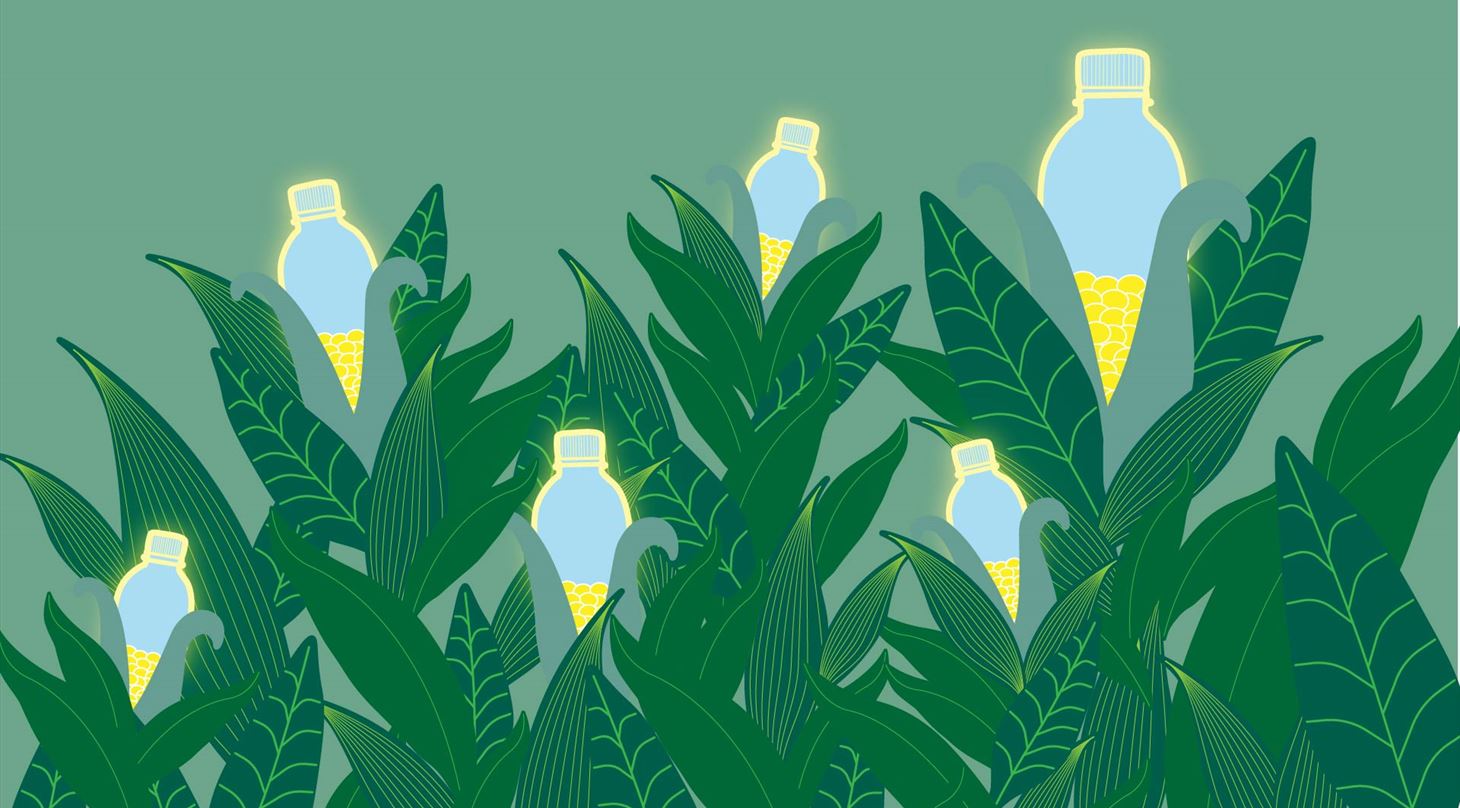
Worth knowing about bioplastics
In a time with a focus on sustainability and recycling, many consumers are searching for alternatives to plastic. Bioplastics are one of the alternatives currently gaining ground. Find out more about what's what regarding this plant-based plastic type.
Bioplastics are plastic materials based on biomass rather than fossil resources such as oil and natural gas. Corn, beets, sugarcane, bamboo, and straw are the most popular raw materials used for producing bioplastics. These plant-based plastics can, among other things, be used to make packaging, bags, bottles, and agricultural films.
Is bioplastic CO₂-neutral?
Bioplastics are based on plants, which absorb CO₂ from the atmosphere when they grow in the fields. Therefore, when bioplastics are sent for incineration, only the amount of CO₂ that the plant absorbed during growth is released. In practice, this means that bioplastics do not emit more CO₂ than the plants absorbed in the field.
A complex environmental calculation
However, bioplastics can never be completely CO₂-neutral. The energy used for cultivating the plants, transportation, and manufacturing of the bioplastic must also be included in the equation. Nevertheless, with bioplastics, the atmosphere is burdened with significantly less CO₂ compared to conventional plastics, and many types can be recycled. For every kilo of plastic we recycle, we typically emit 1.5 kilos less CO₂ to the atmosphere.
Are bioplastics degraded in nature?
Bioplastics can be biodegradable, but as a rule, they do not break down in nature. If bioplastics are nevertheless left in nature or in our water environments, they are only broken down after many years, just as conventional plastics are.
Therefore, biodegradable bioplastics, like other biodegradable plastics, must be collected and sent to special industrial composting facilities. Here, the material is degraded into water, CO₂, and organic matter with the help of elevated temperature, moisture, and microorganisms. If such a facility is not available, the biodegradable plastic should be incinerated. Unfortunately, biodegradable plastics cannot be recycled.
What should you choose: plastic or bioplastic?
If you as a consumer have the option to choose between bioplastics and conventional plastics, you should choose bioplastics. Bioplastics make good sense as a replacement for conventional fossil-based plastics because bioplastics can be recycled and included in the circular resource economy. However, products made entirely or partially from bioplastics are typically somewhat more expensive than a similar product made from conventional plastics.
What are the disadvantages of bioplastics?
To produce bioplastics, the plants must be grown in fields, and there is already a lack of available land. One disadvantage of bioplastics is therefore that they occupy land that could otherwise be used for food production. Another problem is that, for example, prices of corn could increase globally if the plastic industry begins to buy up large quantities of corn for bioplastics. This would adversely affect people in countries where corn is a major food staple.
A solution on the way
Fortunately, a solution is on the way. Right now, research is underway into how we can convert bio-waste from food production into bioplastics. By using waste as a resource, we avoid occupying fields, thereby allowing them to be used for food production.
Advice on plastic recycling
At the Danish Technological Institute, we can help you overcome the barriers related to recycling and resource optimization of plastics.
Read more about our competencies, or contact Senior Specialist Jørn Bech at +45 7220 1674 or jrb@teknologisk.dk